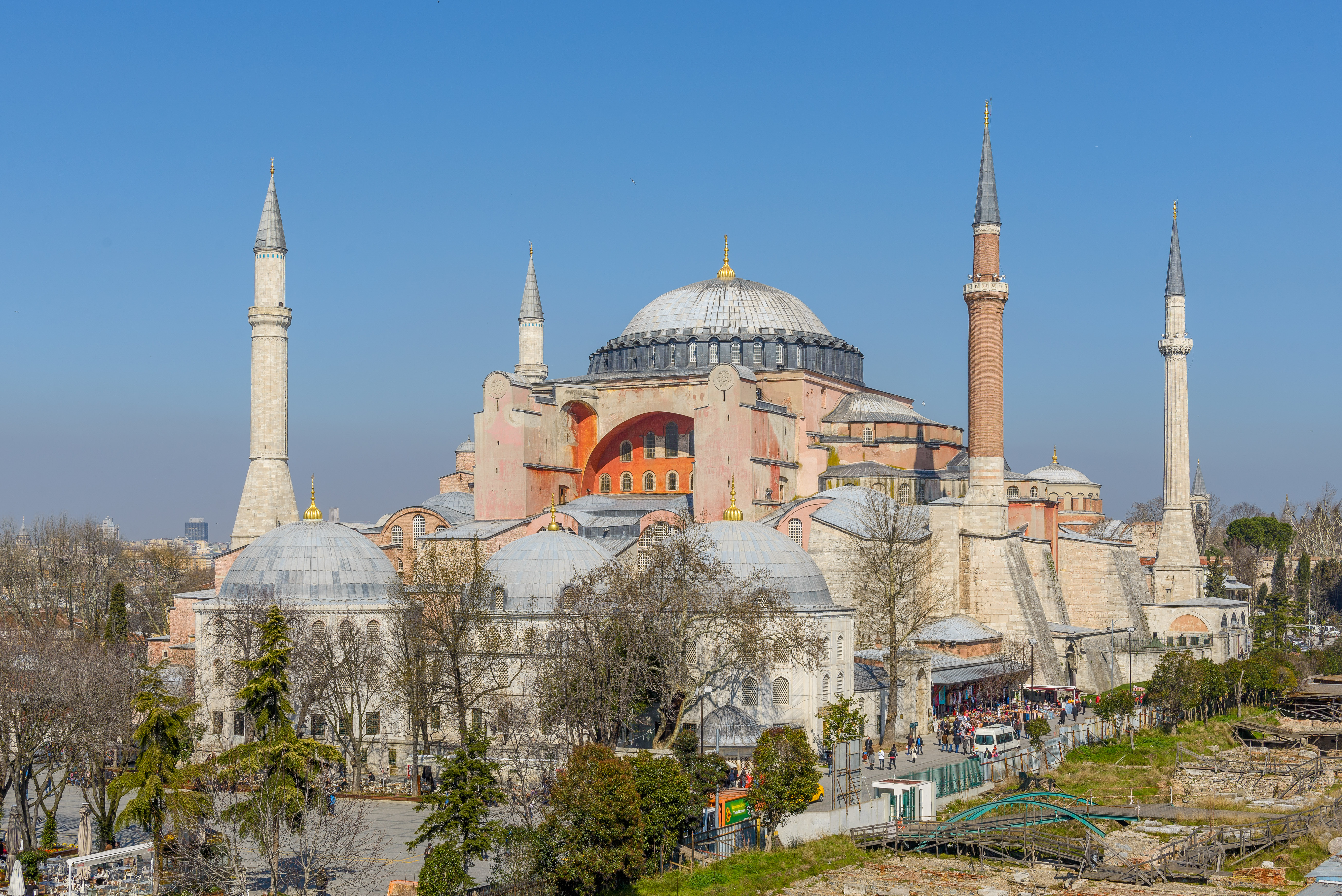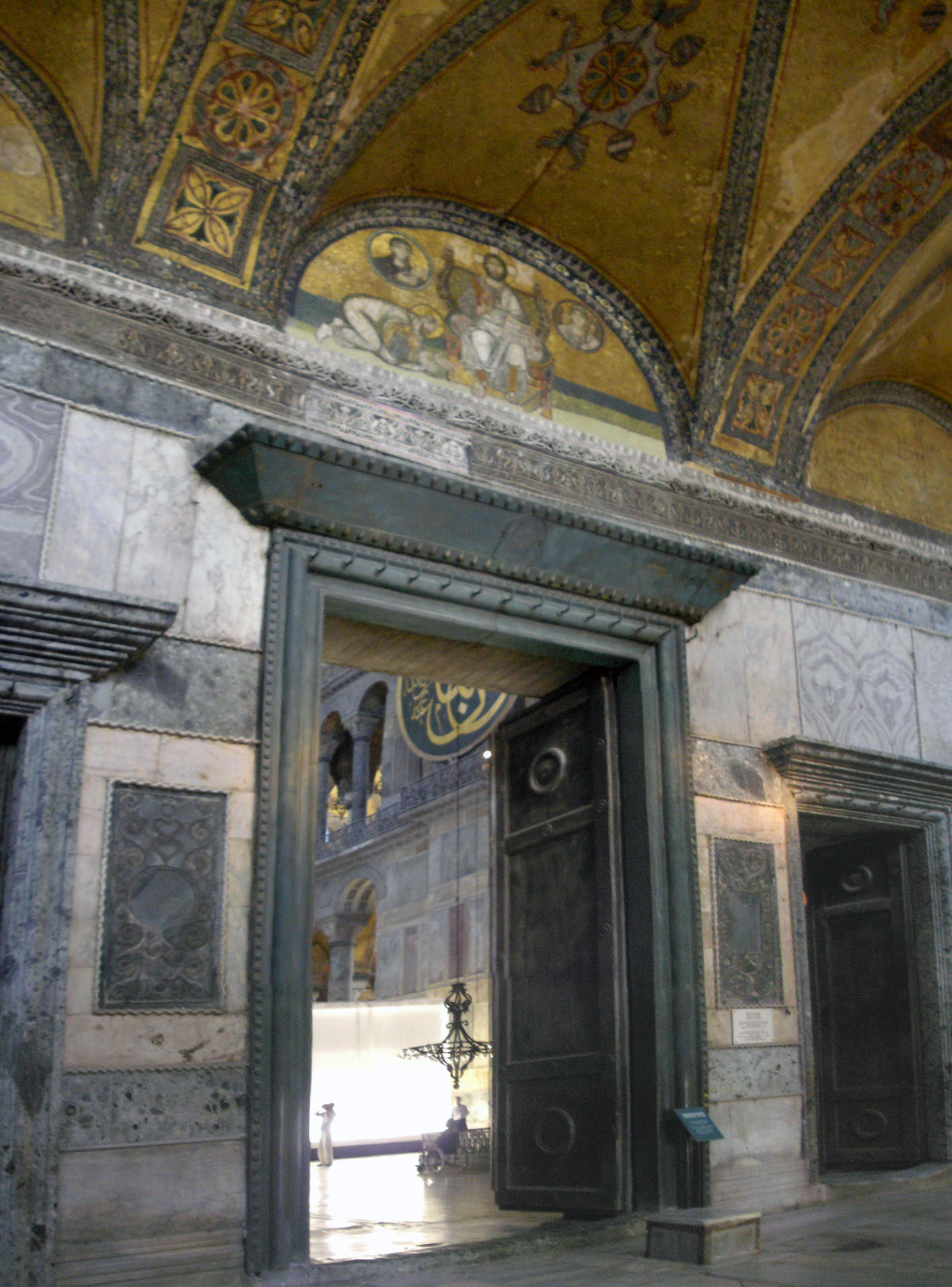Haghia Sophia, Istanbul
Structure of the day_Haghia Sophia, Istanbul
world's greatest architectural achievements.
Image source :http://www.teslasociety.com/pictures/Roman%20Empire%20Images/RomanEmpire3.jpg
The nchurch of the Holy Wisdom," Haghia Sophia is among the world's greatest architectural achievements. More than 1,400 years old, it stands as a testament to the sophistication of 6th-century Constantinople, and had a huge influence on architecture in the centuries that followed. The vast edifice was built over two earlier churches and inaugurated by the Byzantine emperor Justinian I in 537. In the 15th century, the Ottomans converted it into a mosque: the minarets, tombs, and fountains date from this period. To help support the structure's great weight, the exterior Entrance 1453 has been buttressed on numerous occasions, which has partly obscured its original shape.
UPPER WALLS AND DOME MOSAICS
The apse is dominated by a large and striking mosaic showing the Virgin with the infant Jesus on her lap 1\No other mosaics, urweiled in 867, depict the archangels Gabriel and Michael, although only fragments of the latter rema1n Portraits of the saints Ignatius the Younger, John Chrysostom, and Ignatius Theoj:horus adorn n1ches in the north tympanum. In a concave area at the base of the dome is a mosaic of the s ixwinged seraphim. The dome is decorated with Koranic inscriptions (calligraphic roundels). It was once covered in gold mosaic tiles.

Image source: https://upload.wikimedia.org/wikipedia/commons/2/22/Hagia_Sophia_Mars_2013.jpg
Mosaics
The church's splendid Byzantine mosaics include this one at the end of the south gallery. It depicts Christ flank.ed by E!Tl)eror Constantine IX and his wife, the E!Tl)ress Zoe.
WEEPING PILLAR
Crowds often gather around the pillar of St. Gregory the MiracleWorker in the northwest comer of the ground floor. Moisture seeping from this brass-dad column is believed to have healing powers.

Image source : https://images.trvl-media.com/media/
THE GROUND FLOOR
The 1 nterior of Haghia Sophia succeeds in imparting a truly celestial feel. Highlights include the fine Byzantine mosaics, mostly dating from the 9th century or later. The most conspicuous features at ground level are those added by the Ottoman sultans after the conquest of Istanbul in 1453, when the church was converted into a mosque. These compnse the rnhrab, a n1che indicating the direct1on of Mecca, the minbar, a platform used by the imam to deliver sermons; the Sultan's loge, a safe place in which the sultan could pray; and the Kursu, a throne used by the imam while reading from the Koran.

IMAGE SOURCE : https://upload.wikimedia.org
Ablutions Fountain
Ablutions Fountain > Built around 1740, this fountain is an exquisite example of Turk.ish Rococo style.lts projecting roof is painted with floral reliefs.


0 Response to "Haghia Sophia, Istanbul"
Post a Comment